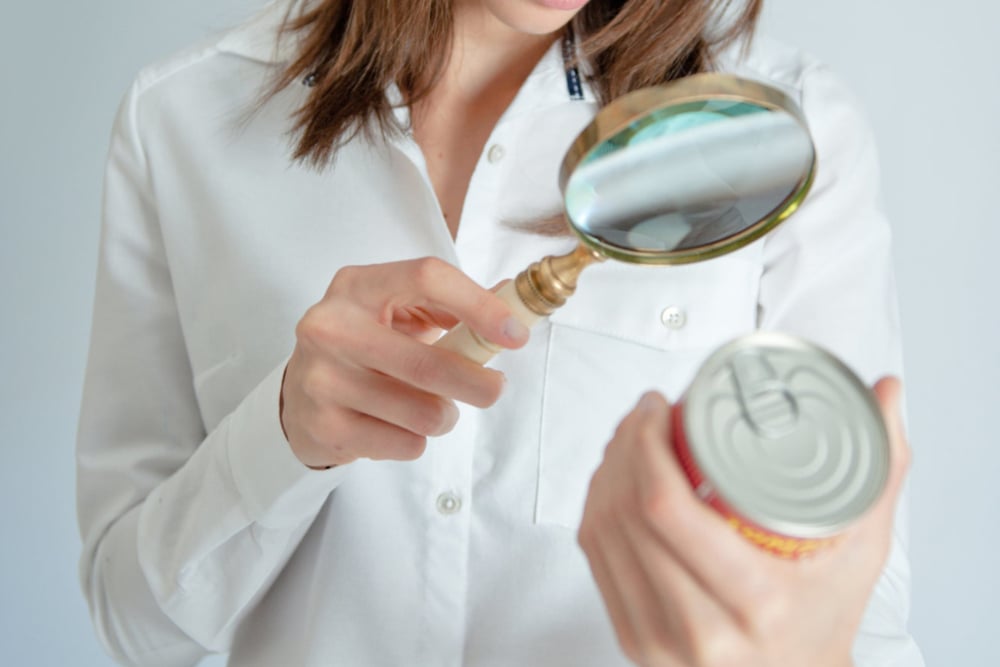
Are you confused if yeast extract is gluten-free? How about maltodextrin? Caramel color? Cheerios? In this article, I’ll share the gluten status of 25 of the most confusing ingredients and products in gluten-free land. This post contains affiliate links and was last updated in August 2023. Please see my disclosures.
Eating gluten-free can be an extremely confusing and frustrating experience.
There are so many ingredients inside the average packaged food item that you must do detective work before taking a first bite.
On top of that, there are many online rumors and misinformation about what may or may not be gluten-free, and all of this information, for better or worse, can put even the most seasoned gluten-free eater in a tailspin.
Fear not!
In this article, I discuss 25 of the most confusing ingredients and products in gluten-free land and will help you once and for all decode if they’re gluten-free.

(1) Is Maltodextrin Gluten Free?
Maltodextrin is a food additive found in many processed foods. The word itself is confusing because it contains “malt,” typically associated with barley.
According to Beyond Celiac, maltodextrin is safe to consume on a gluten-free diet, even if derived from wheat. Maltodextrin is highly processed to the point that the gluten is removed.
That said, most of the maltodextrin used in processed foods comes from corn or tapioca, not wheat.
(2) Is Yeast Gluten Free?
Most people associate yeast with bread, so they may not realize that yeast is gluten-free and safe to eat when following a gluten-free diet.
In fact, you need yeast to make your gluten-free bread or gluten-free pizza dough.
(3) Is Yeast Extract Gluten Free?
Yeast extract, unlike yeast, is NOT typically gluten-free. Yeast extract and autolyzed yeast extract are made from spent brewer’s yeast, a byproduct of the beer brewing process.
Unless you know the source of yeast extract or a product is labeled “gluten-free,” you should avoid products that contain yeast extract.

(4) Is Vinegar Gluten Free?
Vinegar can be gluten-free, depending on whether or not it has been distilled.
Distilled vinegar is gluten-free. Distilled red or white wine vinegar, grape vinegar, and apple cider vinegar are all gluten-free.
Distilled vinegar is gluten-free, even if the vinegar is derived from wheat, barley, or rye.
However, non-distilled vinegar may or may not be gluten-free.
If a non-distilled vinegar is not made from gluten sources (wheat, rye, barley), it can be gluten-free. For example, apple cider vinegar is derived from apples, so it’s almost always considered gluten-free, regardless if it’s distilled.
Rice vinegar may or may not be distilled; however, as long as it’s derived from just rice, it’s gluten-free. Beware of rice vinegar that also contains malt. Read labels carefully.
Remember, malt vinegar is rarely distilled and contains gluten. Malt is derived from barley, which you can learn more about in my article, Beware of Malt and These 21 Potential Sources of Barley (Gluten).
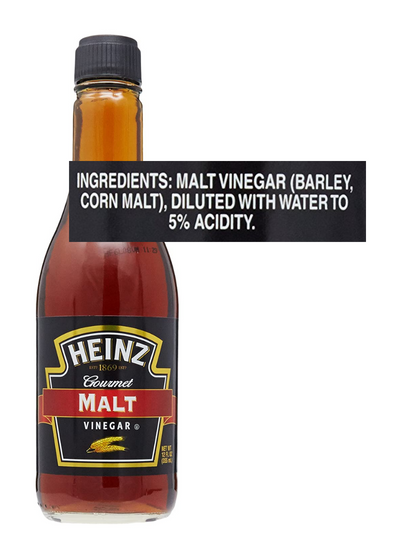
(5) Is Modified Food Starch Gluten Free?
Most modified food starch is made from corn or potato but can also come from wheat.
Due to required FDA food labeling in the U.S., if modified food starch comes from wheat, the word “wheat” will be listed somewhere on the ingredient label or allergen disclosure statement. If you don’t see wheat on the disclosure statement, the modified food starch does not contain wheat.
(6) Is Alcohol Gluten Free?
All distilled liquor is technically gluten-free, even if it’s distilled from a gluten-containing grain such as wheat, barley, or rye.
However, an alcohol brand cannot be labeled as “gluten-free” if made from gluten-containing grains, even if the gluten has been removed from the final product.
Such products must be labeled with a qualifying statement that the product was “processed,” “treated,” or “crafted” to remove gluten, warning the consumer that the product was made using gluten grains.
However, if an alcohol product doesn’t contain gluten, such as wines fermented from grapes or spirits distilled from non-gluten-containing grains, it can be labeled “gluten-free” according to the Alcohol and Tobacco Tax and Trade Bureau (TTB), the government agency that regulates liquor.
Learn more about gluten in alcohol in my article, Guide to Gluten-Free Alcohol.
(7) Is Gluten-Removed Beer Gluten Free?
Gluten-removed beers, which may be labeled as “crafted to remove gluten,” are made from barley and other gluten grains.
Manufacturers use enzymes to break down the gluten protein to the point where it becomes undetectable or significantly reduced in the final product.
Experts in the gluten-free community caution people with celiac disease or gluten sensitivity against drinking gluten-removed beer since there’s no valid testing method to determine their safety.
The Gluten-Free Certification Organization (GFCO) found that some people with celiac disease still react to gluten-removed beer. This is why many experts say persons with celiac disease or gluten sensitivities should avoid gluten-removed beers.
(8) Is Sourdough Bread Gluten-Free
Sourdough bread is another food item that stumps even the most experienced gluten-free eater. There are a lot of Internet rumors touting that even someone with celiac disease can consume wheat-based sourdough bread.
Sourdough bread is made from fermenting dough using naturally occurring lactobacilli and yeast. During fermentation, the yeast breaks down the gluten, making the gluten more digestible but not eliminating it.
It’s nearly impossible to find sourdough bread that has fermented long enough to break down the gluten protein fully. Almost all bread in bakeries and grocery stores today is made with fast-acting chemicals and/or baker’s yeast, not a slow fermentation process.
Plus, it’s just too risky to eat bread made from wheat. How could you know that every bit of the flour was fully and adequately fermented? And why would you want wheat flour in your kitchen anyway? The risk of airborne flour is much too great.
I encourage you to read my article, Is Sourdough Bread Gluten-Free? to learn more about the ins and outs of this important topic.
And if you want gluten-free sourdough bread, I have a few recommendations.
First, using my recipes, you can make your own gluten-free sourdough bread starter (pictured) and gluten-free sourdough bread.
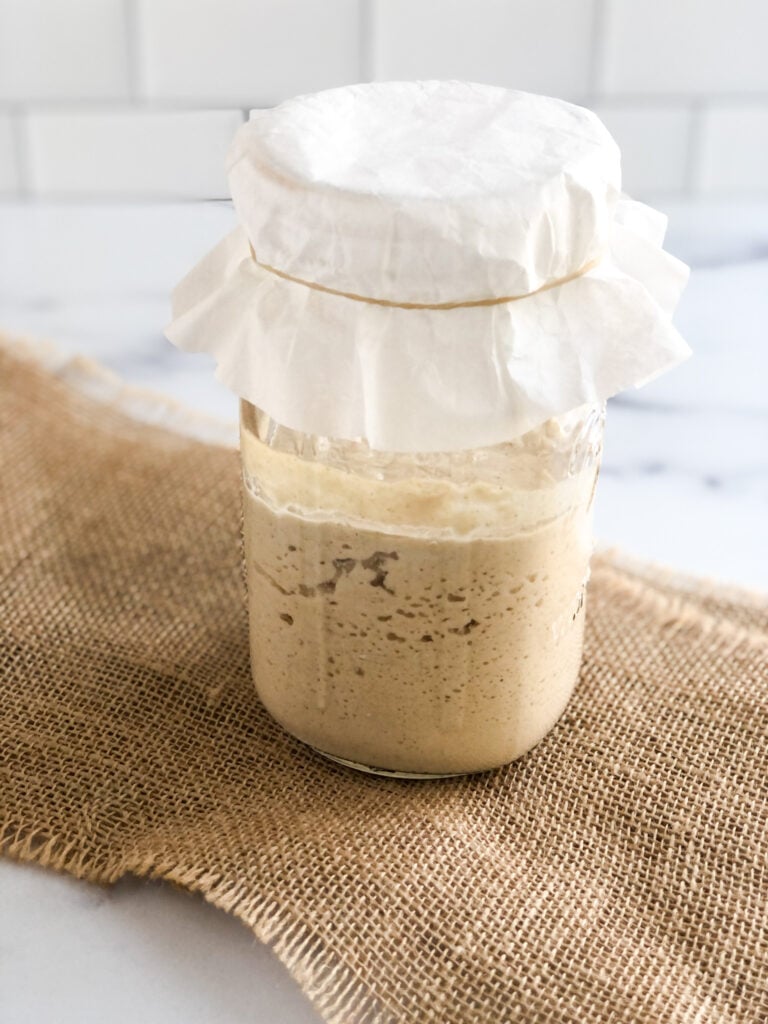
Second, you can purchase safe, gluten-free sourdough bread from Bread Srsly, made from 100 percent gluten-free grains. Use my coupon code – goodforyou10 – for 15% off your first order.
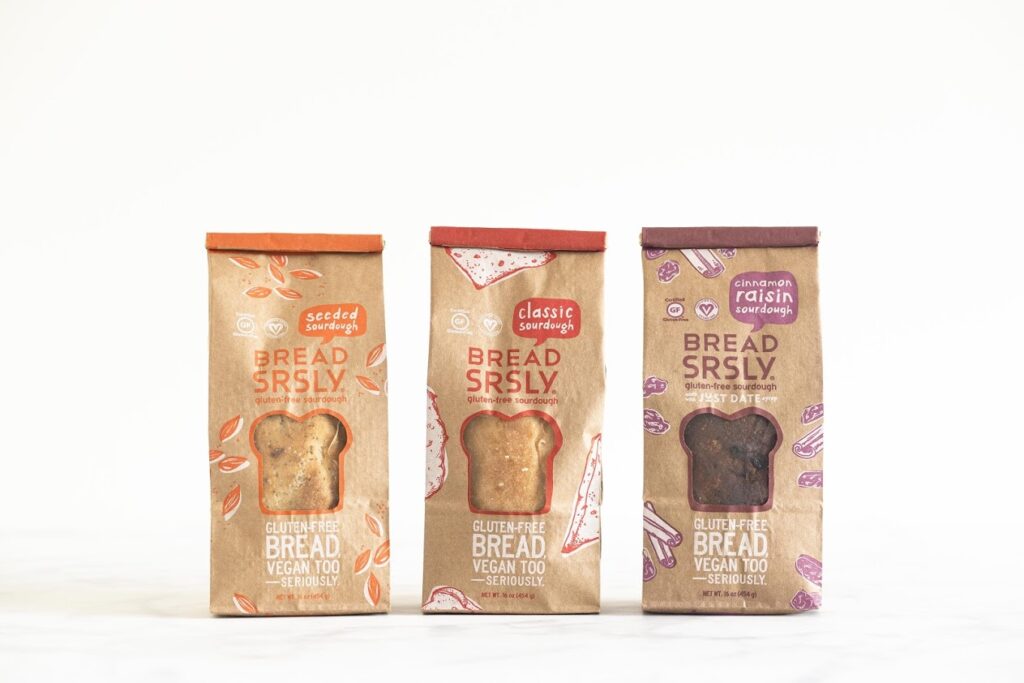
(9) Is Molasses Gluten Free?
While most home cooks rarely bake with molasses, come Christmas time, this dark and sticky substance kicks into high gear. I use it to make the most delicious chewy molasses cookies and cute gingerbread cookies.
Molasses is made from refining either sugar cane or sugar beet juice into syrupy sugar. It can also be made from sorghum, a gluten-free grain.
The sugar crystals are extracted from the mixture, leaving behind a dark liquid known as molasses. Molasses is what gives brown sugar its defining look and taste.
The bottom line: Pure molasses is gluten-free. Of course, be sure to check labels for any red-flag ingredients.
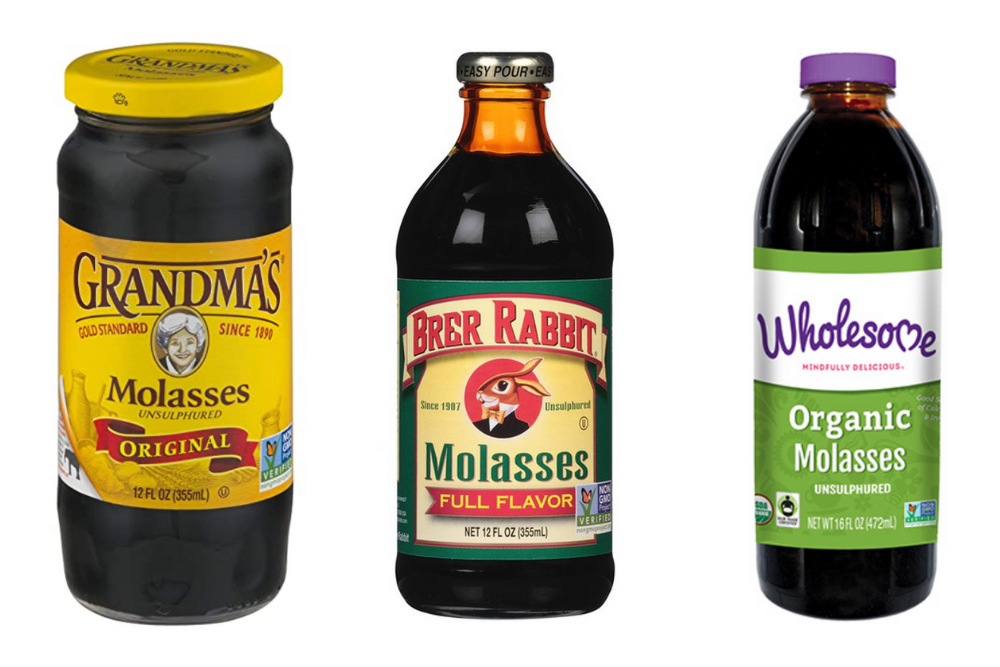
(10) Is Brown Rice Syrup Gluten Free?
With a name like “brown rice syrup,” you would think gluten would not be an issue. But not so fast!
Brown rice syrup is made by fermenting brown rice with enzymes that disintegrate the starch. While brown rice is gluten-free, the enzymes used to process brown rice syrup may not be gluten-free.
Barley enzymes are sometimes used during the fermentation process and are NOT gluten-free. However, fungal enzymes are sometimes used, and they are gluten-free, according to Gluten-Free Living magazine.
If a product contains brown rice syrup labeled “gluten-free,” then you know barley enzymes were not used.
However, if the product is not labeled “gluten-free,” you might want to avoid it or do additional research.
Unlike wheat, barley is not an allergen required by law to be disclosed on an ingredient label, so you must contact the manufacturer for more information.
(11) Is Wheatgrass Gluten Free?
Wheatgrass is technically gluten-free despite its name. Wheatgrass is extracted from the freshly sprouted first leaves of the wheat plant, and wheatgrass juice is extracted from those sprouts before the wheat seed begins to form. The wheat seed is where the protein – aka gluten – resides.
If you’re eating the grass (without the seed), you’re consuming the gluten-free part of the plant. The same is true for barley grass – the barley grass is gluten-free, but the seed kernel, or endosperm, is not.
Remember, however, you’ll need to trust that the farmer growing wheatgrass has a pure wheatgrass farm and that he has been mindful of the harvesting and production process to ensure no seeds get into the final product.
This is why it’s essential that anything containing wheatgrass or barley grass is labeled gluten-free or, better, certified gluten-free.
If you have a wheat allergy, you should avoid wheatgrass regardless if the seed is present.
Also, people with non-celiac wheat sensitivity may be reacting to other components of wheat, not just gluten, and should avoid products labeled gluten-free but are not wheat-free.
(12) Is Gelatin Gluten Free?
Gelatin sounds like gluten and is often confused with gluten at first glance.
Gelatin, however, is gluten-free. It’s made from the hydrolysis of animal collagen. Gelatin is most commonly used as a gelling agent in food products, notably in Jell-O, puddings, marshmallows, and gummies (including gummy vitamins).
Vegans should avoid gelatin, as it is typically sourced from beef, pork, or fish sources. That said, gelatin is gluten-free and safe for someone on a gluten-free diet.
(13) Is European Wheat Safe to Eat?
While wheat produced in different regions of the world – and even other areas of the U.S. – can vary in gluten content, at the end of the day, all wheat contains the infamous protein known as gluten.
On top of that, a lot of the wheat found in Europe is imported from America, so there’s that.
Read my article, Is European Wheat More Tolerable than U.S. Wheat? to understand better why people can tolerate wheat in Europe vs. home in the U.S. It’s not what you think.
(14) Are Natural and Artificial Flavors Gluten Free?
Natural flavors are derived from real food sources such as fruits, vegetables, herbs, or spices. In contrast, artificial flavors are chemical compounds synthesized in the lab designed to mimic the taste of various flavors found in nature.
Natural and artificial flavors in most products are gluten-free unless noted otherwise on the ingredient label. However, there are exceptions to the rule.
Look for a gluten-free label when you see natural or artificial flavors because there are several products that contain natural and artificial flavors derived from gluten sources.
Read Why Natural and Artificial Flavors Are Not Always Gluten-Free to see these products and learn more about this seemingly innocuous ingredient.
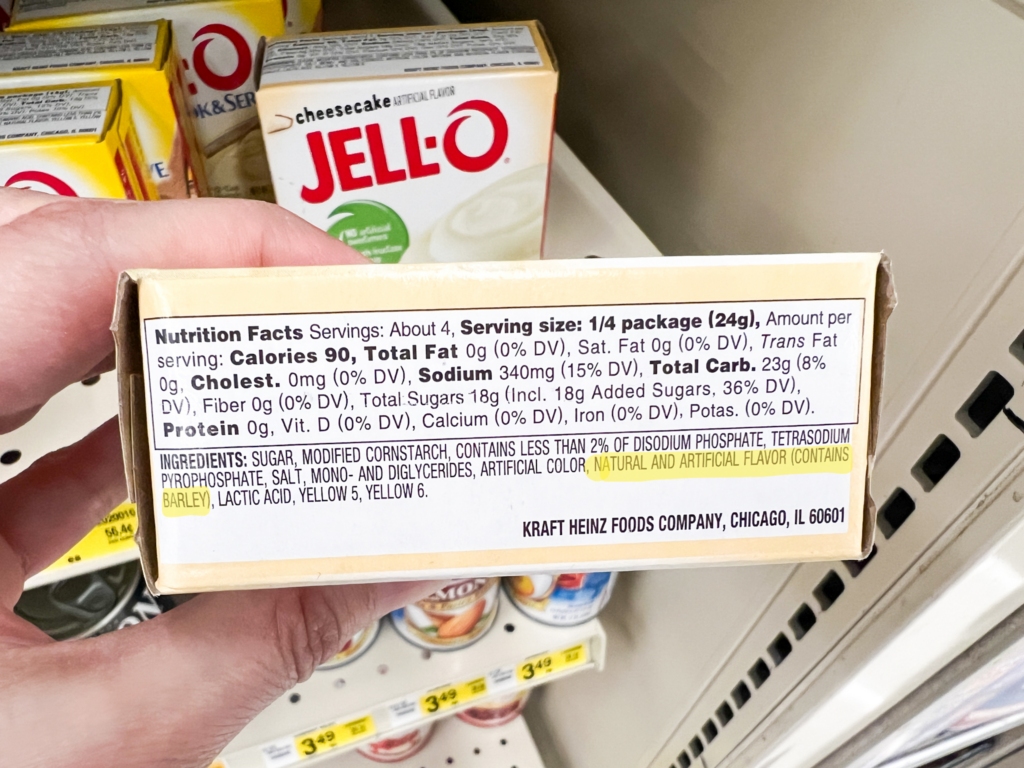
(15) Are Mushrooms Gluten Free?
The Internet rumor mill is buzzing with questions about whether or not mushrooms are gluten-free.
I don’t know the exact answer to this question, but I have researched the topic in depth in my article, Are Mushrooms Gluten Free?
The confusion about whether mushrooms are gluten-free stems from how mushrooms are grown. Some mushroom spores are grown on gluten grains. Yikes!
No one knows how much gluten residue is left behind on the mushroom, but most experts say it’s far less than the 20 ppm gluten the FDA requires for something labeled gluten-free.
If you react when you eat mushrooms or eat a lot of mushrooms and still have high biomarkers for celiac despite being on a gluten-free diet, you may want to consider eliminating mushrooms from your diet.
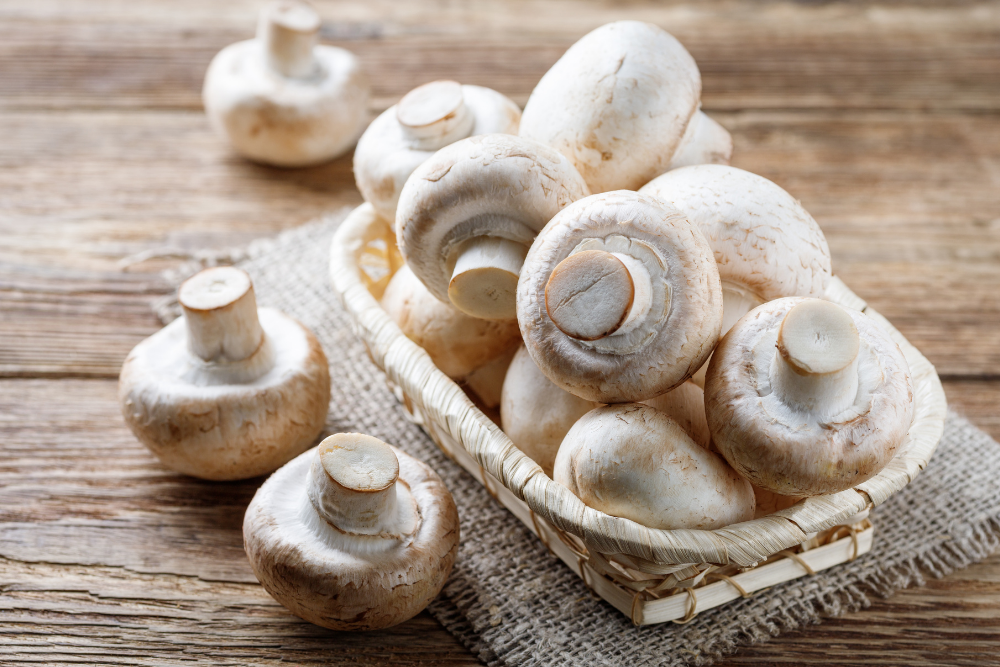
(16) Is MSG Gluten Free?
Monosodium glutamate, or MSG, is a flavor-enhancing food additive that gives food a savory, desirable taste.
Various starches are used in making MSG; however, the ingredient is rarely sourced from wheat.
To be safe, look for products labeled “gluten-free” when MSG is present, or just avoid MSG altogether because it has been linked to a slew of adverse symptoms such as headaches, nausea, and weakness.
(17) Does Blue Cheese Contain Gluten?
Blue cheese is tricky when it comes to gluten. The mold found in blue cheese is most likely grown on wheat, barley, and rye spores, so the cheese comes in contact with gluten.
The Canadian Celiac Association tested blue cheese grown on gluten spores, and the organization found it contained less than five ppm of gluten. Remember, the FDA requires products to contain less than 20 ppm to be labeled “gluten-free.”
I avoid blue cheese because I don’t like it, but it might be considered gluten-free. If you react after eating it, it might be time to cut the cheese, so to speak.
(18) Do Spices Contain Gluten?
Fresh spices, like fresh basil, mint, garlic, etc., are 100 percent free from any gluten. However, things get a little trickier when it comes to packaged spices.
The best way to ensure you get dried spices free from gluten is to look for herbs marked gluten-free.
Spicely brand spices, for example, are certified gluten-free as well and can be ordered online and found in select grocery stores.
Also, avoid buying spices processed on the same equipment as products that may contain wheat (gluten). Look for herbs with single ingredients and no fillers. Read ingredient and allergen disclosure statements carefully for clues, and contact manufacturers when in doubt.

I list all the safe, gluten-free spice brands and test several brands for hidden gluten with my Nima Sensor in this comprehensive article.
(19) Do Oats Contain Gluten?
A common question newbie gluten-free eaters ask is whether or not oats are gluten-free.
Oats are naturally gluten-free; however, they’re grown in rotation with wheat. Therefore the same fields are used to grow wheat and oats, and the same harvesting, storing, and processing equipment are used for both, too.
You can purchase safe, gluten-free oats from reputable brands. Some brands use purity protocol oats, which are oats that are grown on dedicated gluten-free fields and processed using dedicated gluten-free equipment.
Other companies mechanically or optically sort their oats to remove any traces of gluten so only the oat grain is left.
I encourage you to read my article, Are Oats Gluten Free? Unpacking Confusing and Contradictory Information for a more detailed response to this important question.
Some influencers in the gluten-free community do not recommend oats; however, I believe gluten-free oats can be safely enjoyed. Avoiding them would be an unnecessary restriction and could lead to hypervigilance dieting.
I also am okay eating products that contain gluten-free oats, even if the product isn’t certified gluten-free (although certification is always preferable).
For example, I eat Bob’s Red Mill gluten-free oats, which are neither purity protocol oats nor certified gluten-free; however, Bob’s Red Mill has satisfactory processes in place to ensure the oats are safe for the gluten-free community to consume.
(20) Are Cheerios Gluten Free?
Another question I get a lot is, “Are Cheerios gluten-free?” and why are Cheerios so controversial if they’re clearly labeled “gluten-free”?
The bottom line is that Cheerios are gluten-free, but not without controversy due to corporate mistrust in General Mills and an influential person expressing concerns over General Mills’ oat protocols.
While everyone must decide for themselves whether they feel comfortable eating gluten-free Cheerios, the truth is there is a lot of pressure in the community, based on misinformation, to avoid them.
Years ago, one so-called celiac celebrity even publicly shamed a blogger friend of mine for posting about Cheerios. It was totally uncalled for.
If you want to truly understand whether or not gluten-free Cheerios are safe, please read Unpacking the Gluten-Free Cheerios Controversy; Is It Time to Reconsider Your Stance?

(21) Does Grain-Fed Steak Contain Gluten?
Have you ever wondered how the feed of the animal might impact whether the animal’s byproducts (eggs, milk) or flesh (meat) might be impacted?
You can feel better knowing that even if an animal was fed gluten grains, the byproducts or flesh are gluten-free and safe to eat when you’re following a gluten-free diet.
The animal converts the food proteins into animal proteins during digestion. The only way meat would contain gluten is if gluten was added during processing, either via a filler or seasoning.
(22) Is Wheat Starch Gluten Free?
Manufacturers remove the protein (gluten) from the starchy part of the wheat plant to make wheat starch. If the wheat starch is labeled gluten-free, the wheat starch is gluten-free. Please note, however, that gluten-free wheat starch is not wheat-free, only gluten-free.
Gluten-free wheat starch is found in many gluten-free products, including DiGiorno pizza and Caputo gluten-free flour.
Learn more about this controversial ingredient in my article, Wheat-Free vs. Gluten-Free: What’s the Difference?

(23) Is Coffee Gluten Free?
Yes, coffee is gluten-free, with few exceptions. Any rumors you’ve heard about coffee beans being coated in wheat are just unfounded rumors.
I go into greater detail on this topic, as well as reveal how four popular coffee brands fared when I tested them for hidden gluten in my article, Is Coffee Gluten Free?
Keep in mind, however, that coffee substitutes are not gluten-free if they contain malt and some flavors. For example, the chocolate flavoring at Starbucks contains gluten. Read labels carefully.
(24) Is Sprouted Wheat Gluten Free?
To make flour, a manufacturer will harvest the seeds from a mature plant and grind them into flour.
However, in sprouted wheat products, the seeds are harvested before they have germinated – or sprouted – into a full-fledged plant. Manufacturers then grind these seeds to make a sprouted wheat “flour.”
Sprout wheat products often market themselves as “flourless” since sprouted grains can’t technically be turned into flour.
Sprouted wheat and flourless products containing sprouted wheat are NOT gluten-free. They most certainly contain gluten.
I write all about why sprouted wheat – and other sprouted grains – even if labeled “flourless,” are not considered gluten-free. Read the full scoop in my article, Is Sprouted Wheat [Bread] Gluten Free?
(25) Is Caramel Color Gluten Free?
Caramel color is generally considered gluten-free unless the starting ingredient used to make it is wheat or malt syrup.
If the starting ingredient is wheat, the manufacturer must, by law, disclose that the product contains wheat per FALCPA.
However, it’s extremely rare that caramel color would come from barley malt, and gluten-containing ingredients are no longer used to make caramel coloring in the U.S.
In fact, North American-made caramel color comes from glucose (from corn) or sucrose (table sugar). Of course, if consuming a product from outside the U.S., read the ingredient label carefully.
Is That Gluten-Free?
No one says eating gluten-free is easy. There are many myths, lies, and untruths, so much so that it can be hard to know what to believe and what to eat.
I hope the information in this article will help you make educated decisions about the food you eat and encourage you to continue to research the information you feel you need to investigate further.
Remember, the best food is and will always be naturally gluten-free foods without an ingredient label.
Is there an ingredient or product I missed that you want me to decode for hidden gluten? If so, please leave me a comment. I will add new items to this list as questions arise.
Additional Reading
You might enjoy these articles, too:
A good reminder to always check labels. Ug!
Recently I bought an 8 oz. package of Red Star Platinum Yeast & made a few pizzas with it & was having Celiac problems & decided to check the package. Sure enough contains WHEAT. Some of the info is written in spanish?? yeast,Xanthan, Gum,Ascorbic Acid, Sorbitian Monostearate Enyymes. CONTAINS Wheat.
LESAFFRE Corp in Milwaukee, Wisconsin 877-677-7000
http://www.LESAFFREYEAST.com
Very informative , it can be really confusing with some ingredients.
Thank you so much for providing this information 😊
Thank you for your kind words Lynda! You made my day!
Your articles in general are AMAZING! I always learn so much & always pray I will retain the info! Thank you for your help with eating gluten free.
You’re welcome. Thanks for the feedback.
Awesome post! I really learned a lot from this article and I’ll take note of these for sure. Thanks for posting!
I love all your info as it does get confusing sometimes as they have hidden words too that r gluten. I love the bob red mill selections of all his products because I can’t eat any other oats without breaking out. It showed my level just under 30 when my np did my food test worth every penny spent on having this done I found even nuts fruit and veg I had high numbers on one being corn I don’t digest it at all. Thanks again for all the tips. Carol b